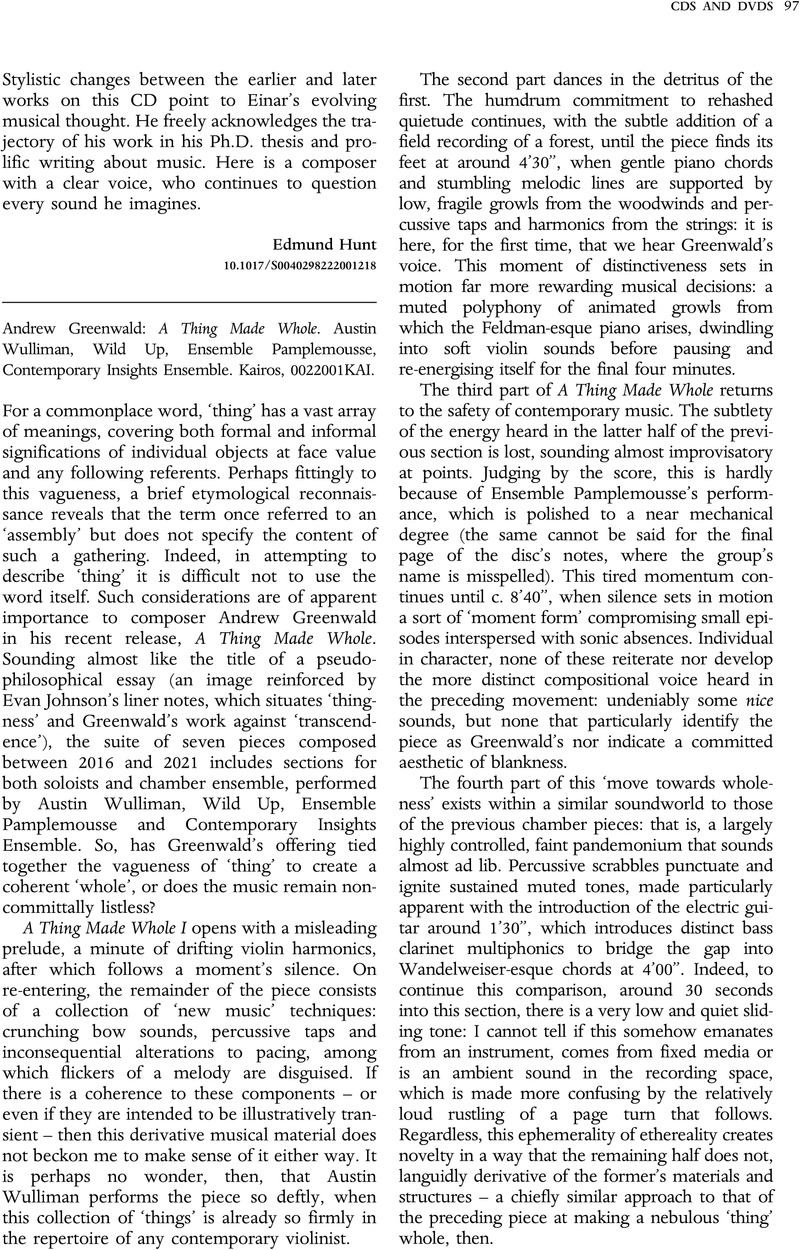No CrossRef data available.
Andrew Greenwald - Andrew Greenwald: A Thing Made Whole. Austin Wulliman, Wild Up, Ensemble Pamplemousse, Contemporary Insights Ensemble. Kairos, 0022001KAI.
Review products
Andrew Greenwald: A Thing Made Whole. Austin Wulliman, Wild Up, Ensemble Pamplemousse, Contemporary Insights Ensemble. Kairos, 0022001KAI.
Published online by Cambridge University Press: 03 April 2023
Abstract
An abstract is not available for this content so a preview has been provided. Please use the Get access link above for information on how to access this content.

Information
- Type
- CDs AND DVDs
- Information
- Copyright
- Copyright © The Author(s), 2023. Published by Cambridge University Press


